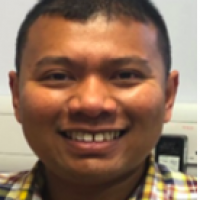Targeted therapies in Sjogren’s syndrome: are we close? Save

There is a clear unmet need for new and effective therapies in primary Sjogren’s Syndrome (pSS) patients, as there are no current licensed therapies.
Therapeutic development in pSS appears to face similar fate to early development in SLE with many therapies (e.g., rituximab, abatacept) having failed to meet their primary end points in Phase 3 randomized controlled trials (RCTs) despite positive signals in Phase 2 RCT. The reasons for this failure could be attributed to trial design including end points that are not sensitive to capture glandular symptoms and fatigue e.g. VAS score and patient selection into the trials.
As there are now three licensed drugs in SLE, is there a glimmer of hope for pSS?
At the 2023 EULAR Congress in Milan, at least a couple of studies demonstrated promising results. In a Phase 2 RCT of dazodalibep (DAZ), a CD40L-inhibitor in N=74 patients, the primary endpoint was met (OP0143). More patients in the DAZ groups achieved significant reduction in ESSDAI score vs placebo. It was also interesting to see that higher hurdle ESSDAI, e.g., 5 or 6 point reduction from baseline favoured the DAZ groups vs placebo (delta difference around 25%). Except for one case of severe COVID-19 infection, DAZ therapy appeared to be well tolerated.
A phase 2 RCT in China of 42 pSS patients with baseline ESSDAI≥5 score showed more patients on telitacicept (TEL), a novel BAFF/APRIL-inhibitor achieved significant reduction in ESSDAI at Week 24 vs PBO (OP0142). There were also trend to improvement in glandular functions e.g. Schirmer’s test in the TEL group. Therapy with TEL produced rapid and sustained reductions in IgG, IgA, IgM and CD19+ B cells. No major safety signals were observed.
Global Phase 3 RCTs are underway for both therapies above. It will be interesting to see how they would fare in the next 3-4 years to translate positive findings from Phase 2 to definitive studies.
The sense in the Sjogren’s camp is that a new licensed therapy will be available soon particularly following the development and preliminary validation of a new composite outcome measure, the Sjogren’s Tool for Assessing Response (STAR), better patient stratification and the approach towards treating systemic active disease instead of merely focusing on glandular function and fatigue.










If you are a health practitioner, you may Login/Register to comment.
Due to the nature of these comment forums, only health practitioners are allowed to comment at this time.